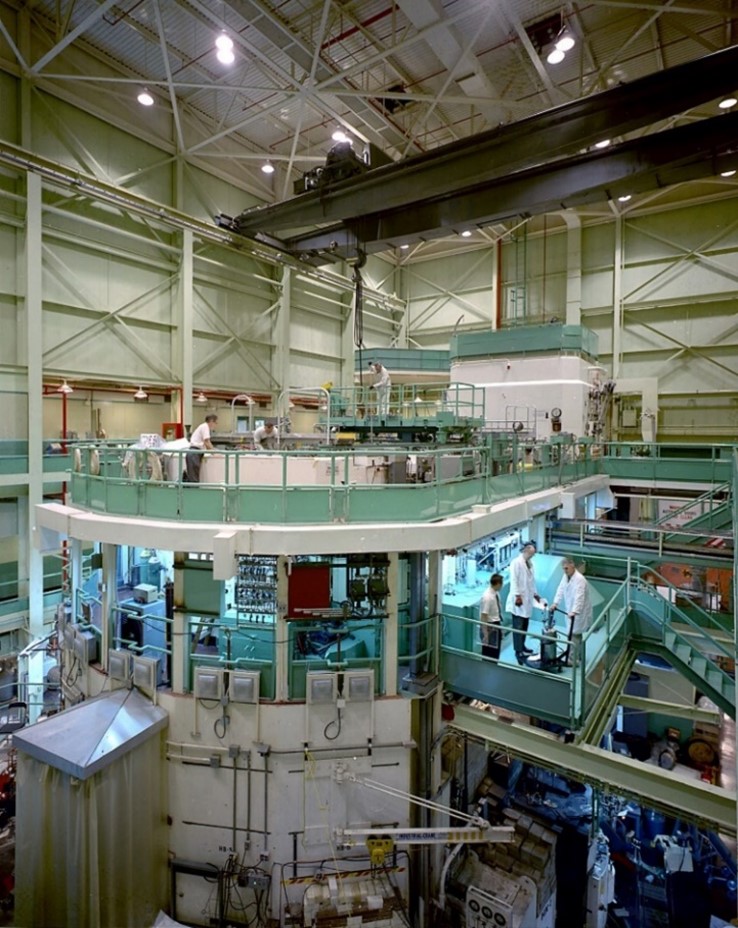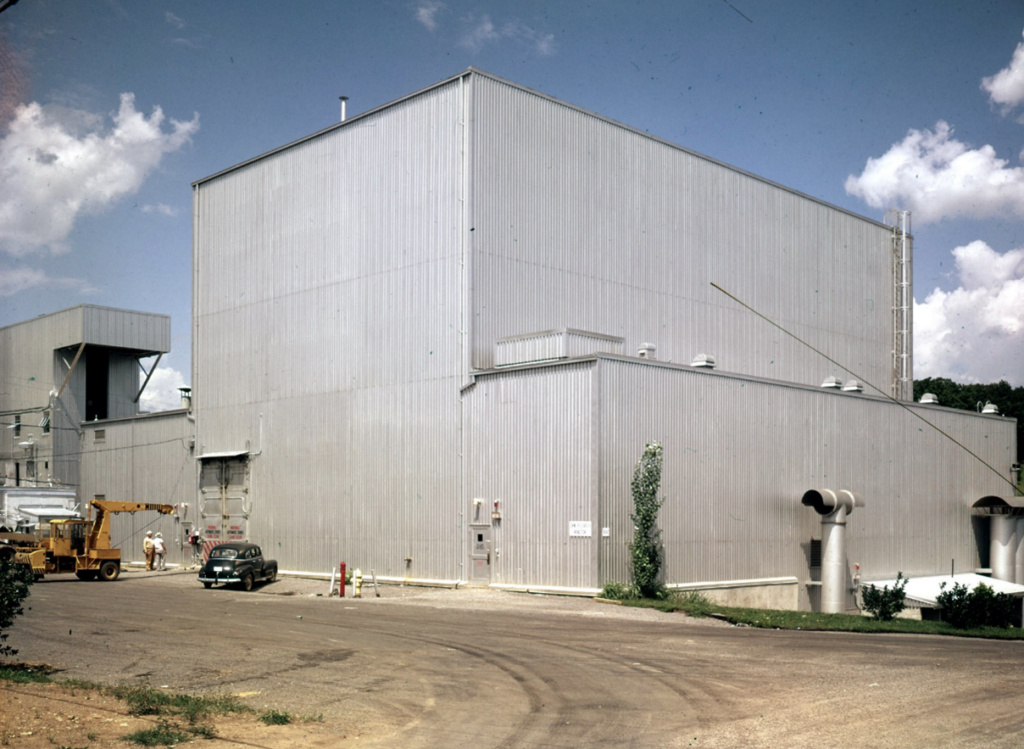Building 3042, The Oak Ridge National Laboratory Research Reactor
Abstract
The Oak Ridge Research Reactor (ORR), housed in Building 3042, served the Oak Ridge National Laboratory (ORNL) and researchers worldwide for 29 years with no interruptions or serious problems. Water cooled, water moderated, and fueled by enriched uranium, it provided the scientific community with a flexible and high-power reactor in a convenient location for research and experimentation. With a neutron flux 300 times greater than that of the ORNL Graphite Reactor (Building 3001), the ORR enabled more complex, fundamental neutron experiments. The reactor was used for research on metals, alloys, and ceramics; neutron scattering and spectrometry; the effects of radiation on materials; and for materials testing for fusion devices and reactor fuel elements of a possible nuclear propulsion system. It generated more radioisotopes for research, medical, and industrial uses than any other reactor in the world during its service life. Perhaps its most famous characteristic was its blue glow, known as Cerenkov radiation.
Construction started in 1955 and was completed near the end of 1957 at a cost of $4.7 million ($51.1 million in 2023 dollars). The building was located just east of the Graphite Reactor to take advantage of nearby facilities that could be shared, such as a ventilation stack. The reactor achieved criticality on March 21, 1958, and operated at 20 MW until mid-1960, when a new cooling system was installed and the power level was increased to 30 MW.
The reactor apparatus was contained within a rectangular, multi-level structure—three above-grade stories and a full basement built into the side of a hill. The central, high-bay portion was the tallest section, flanked by two lower sections or wings. The facility’s three pools had a total capacity of about 150,000 gallons. A hot cell above the end of the west pool was arranged to permit the transfer of samples and experiments from the pool for inspection.
In 1987, the U.S. Department of Energy shut down all of ORNL’s reactors for review in the wake of the incidents at Three Mile Island and Chernobyl; and ORNL subsequently chose to retire all but the Tower Shielding Reactor-II (shut down in 1992) and the High Flux Isotope Reactor (still in operation).





